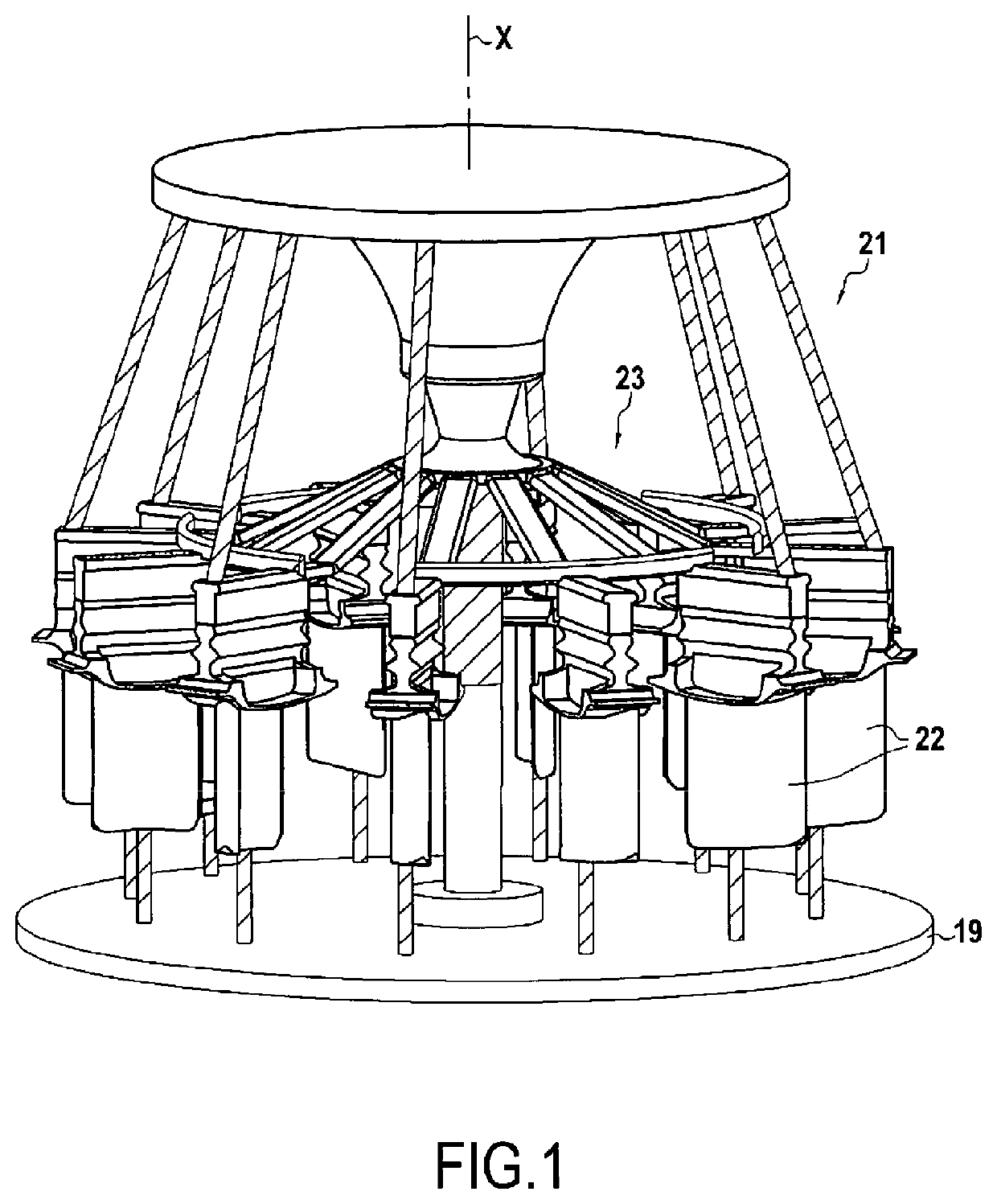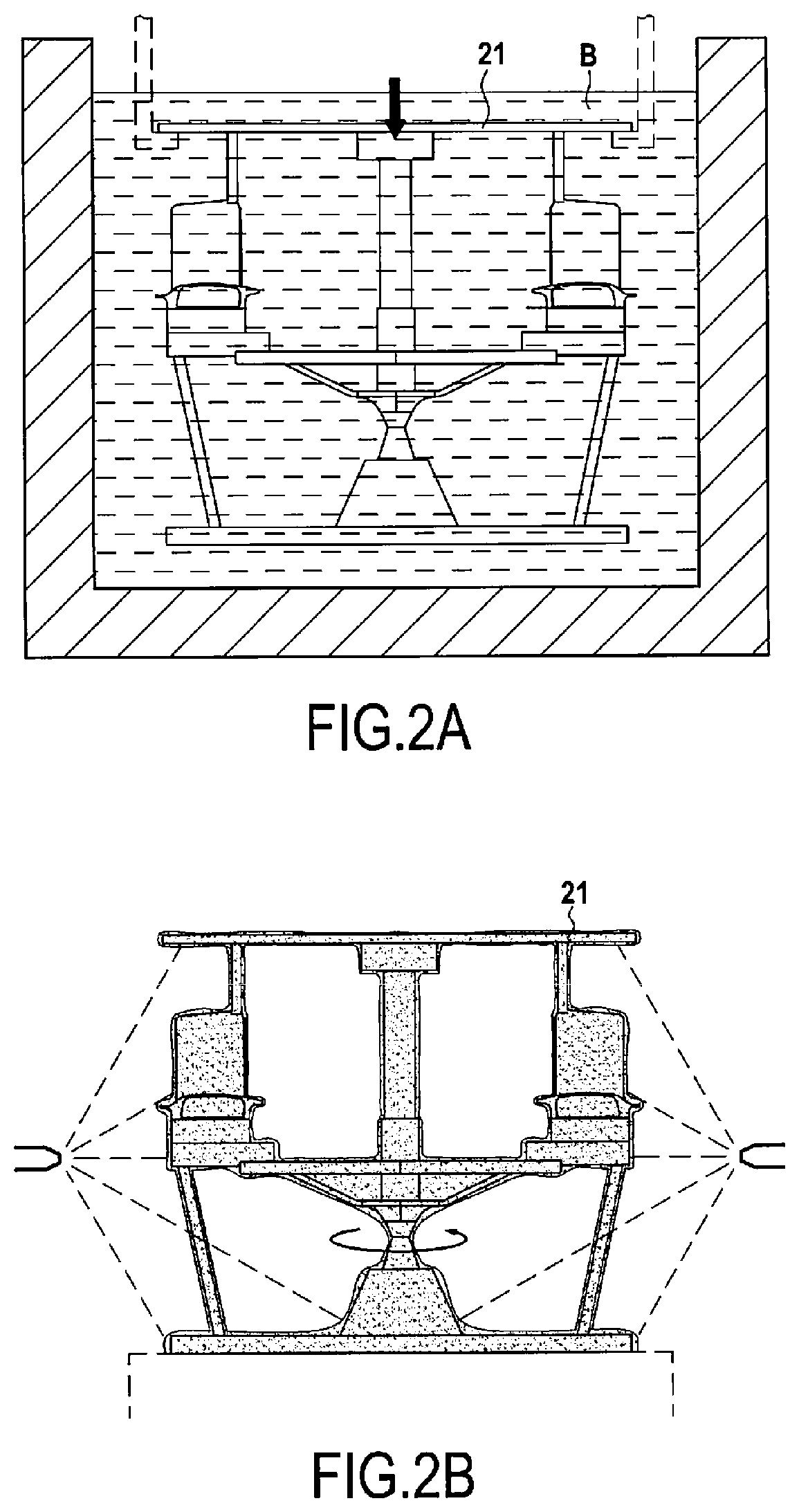Foundry process with hot mold casting
a hot mold casting andfoundry technology, applied in the field of metal casting, can solve the problems of cracks, voids or other defects in the molded parts, and increase the possibility of defects, so as to reduce mold movement, avoid defects, and simplify the process
- Summary
- Abstract
- Description
- Claims
- Application Information
AI Technical Summary
Benefits of technology
Problems solved by technology
Method used
Image
Examples
Embodiment Construction
[0023]A first step of a foundry process according to a first embodiment of the invention is the creation of a non-permanent cluster 21 comprising a plurality of models 22 connected by a shaft 23 supported by a tray 19, as shown in FIG. 1. The parts of the shaft 23 intended to form hollow volumes in the mold 1 are formed from a low melting temperature material, such as a wax or modelling resin, while other parts of the shaft 23, forming stiffeners, can be made from refractory material (hatched in FIG. 1). The models 22, which will form mold cavities in the mold, are also formed from a low melting temperature material. When large numbers of components are to be produced, it is possible to produce these elements by injecting wax or modelling resin into a permanent mold. In the embodiment shown, for the production of gas turbine blades, the models 22 represent such blades, with the blade head facing down.
[0024]To produce a mold, more specifically a shell mold, from this non-permanent cl...
PUM
| Property | Measurement | Unit |
|---|---|---|
| temperatures | aaaaa | aaaaa |
| pressure | aaaaa | aaaaa |
| temperature | aaaaa | aaaaa |
Abstract
Description
Claims
Application Information
 Login to View More
Login to View More - R&D
- Intellectual Property
- Life Sciences
- Materials
- Tech Scout
- Unparalleled Data Quality
- Higher Quality Content
- 60% Fewer Hallucinations
Browse by: Latest US Patents, China's latest patents, Technical Efficacy Thesaurus, Application Domain, Technology Topic, Popular Technical Reports.
© 2025 PatSnap. All rights reserved.Legal|Privacy policy|Modern Slavery Act Transparency Statement|Sitemap|About US| Contact US: help@patsnap.com



